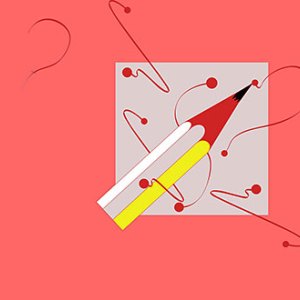Design introduces. It’s the first impression, the make-or-break handshake, and the direct eye contact of a product. If things go well, design might wine and dine you, and before you know it, you’re ordering dessert. Because when design does its job well, the transitions are smooth and the experience is effective.
For books, the primary function of design is to provide a good reader experience. Each step of the design process contributes to this big-picture goal, from designing the cover to laying out the interior content to printing and promoting a title as it finds its way into the hands of readers. As the design lead for Ooligan Press, I’m interested in looking at all sides of how design impacts an end product, including the accessibility of content, the sustainability of printing practices, and the reachability of target audience. Each of these areas invites room for improvement and worthwhile challenges. When we look at the effectiveness of a book’s reader experience, design is probably responsible.
Accessibility
How can content be easily accessible for a given user? With book design, having an end goal in mind can align form to function. Many ebooks and ereaders, for example, offer a variety of options in lighting, text size, and image captions for readers who are visually impaired. Design choices are also key for books with multiple languages (maintain the flow of the message), books for struggling readers (go with fonts that are easy on the eyes), graphic novels (poor placement of speech bubbles could ruin everything), or cookbooks (don’t split up a recipe—no one wants to turn the page with flour-covered fingers).
Other times, design plays a large role in delivering resources. This past summer, I worked with the Oregon Department of Agriculture to develop a toolkit document for social service agencies to assist residents of manufactured home parks through the process of relocation. The toolkit needed to be easy to use so that the correct information could be implemented in a variety of situations. This project gave me a closer look at how the effectiveness of user access rests on design’s shoulders.
Sustainability
Beyond the printed page, Ooligan commits itself to environmentally responsible publishing practices for the sake of sustainability. To remain accountable to this ideal, the titles in Ooligan’s OpenBook Series include specific audits that share decisions such as the types of paper, ink, and print methods used. These choices contribute to the environmental, economic, and social impact of publishing, and we want to operate Ooligan with this awareness in mind. The most recent title in the OpenBook Series is Siblings and Other Disappointments, which was printed in smaller amounts than usual to reduce paper and carbon use while promoting economic sustainability.
Reachability
In our digital age, technology often closes the gap between author and reader: Twitter gets you recognition from celebrities that wouldn’t otherwise be reachable, and enhanced ebooks offer innovative interactions that invite readers to not only read a story but also participate in it. Every new product must also compete with a myriad of other media already out there, which makes curating an experience for a target audience all the more essential.
Airbnb recently updated their mobile app with user convenience in mind, making host-to-guest communication easier, thanks to a universal “design language system” that streamlines shared principles and design tools. For their new approach, they give a tip of the hat to architecture, which is literally built on the concept of sound design.
With book design, the same concepts could be applied. At Ooligan, each book is marketed to a specific audience, and keeping this audience in mind is helpful when shaping the experience to fit the user. For instance, what kind of cover will appeal to readers of young adult time travel, post-earthquake recovery stories set in Portland and Turkey? What font choices would be best for a literary short story collection centered on the theme of disappointment? What other elements would enhance or distract the reader’s engagement with the flow of a narrative?
More than readability (because this is already the baseline goal), reachability considers target audience to inform its design decisions down to every detail. Good design is thoughtful. It asks, “How can we do this better?” As with any product, the design of something may not always meet its intended mark. Still, designers can benefit from the reminder of responsibility. Considering accessibility, sustainability, and reachability can guide design decisions that will last far beyond first impressions.

